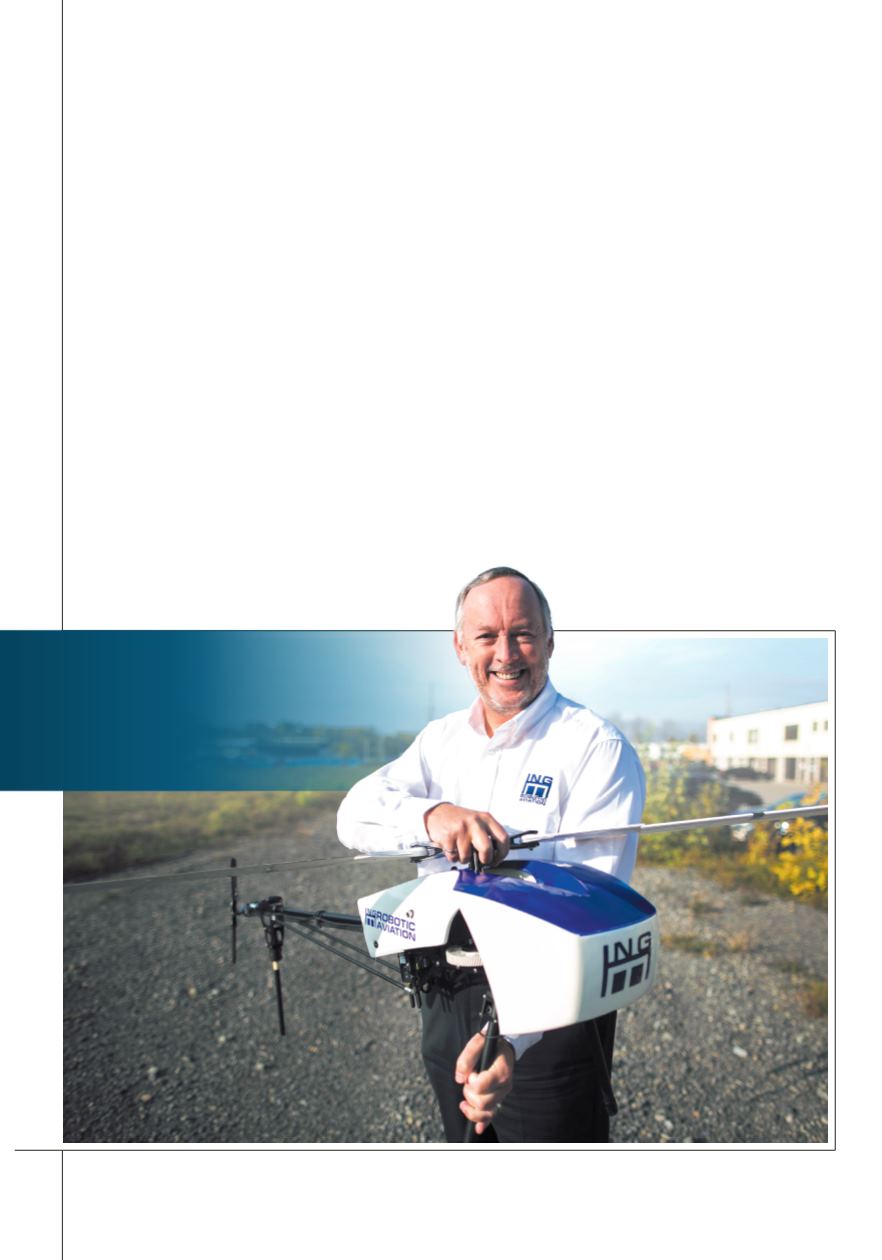

Solutions From Above: Drones
Provide Detailed Detection
While dogs excel at keeping a nose to the ground,
operators are increasingly looking to drones – or
“unmanned aerial vehicles” (UAV), if you will – to
provide a bird’s eye view of leak detection.
While Europe is still fine-tuning its UAV
regulations, the United States just recently granted
the nation’s first approval to fly unmanned aerial
surveys for oil company BP. Drones have been
approved for commercial use in Canada since
2008. The country’s leader for “airborne sensing”
solutions is Ottawa, Ontario-based ING Robotic
Aviation, founded and run by Ian Glenn.
Glenn flew UAV missions for the Royal
Canadian Navy in Afghanistan, turning his
attention to the civilian sector when Canada’s
combat role in the Afghan war wound down. ING
Robotic Aviation now flies across Canada and
the Arctic, providing mapping, inspection, and
monitoring services for clients in forestry, mining,
and utilities, as well as oil and gas.
“There are over 430,000 km (approximately
267,000 miles) of pipeline in Alberta alone,” Glenn
says. “Monitoring these pipelines is a monumental
task. Compared to traditional methods, no other
technology besides aviation robotics can gather as
much detailed information nearly as quickly, cost
effectively, or safely.”
As an example, Glenn says that a UAV
equipped with a high resolution, multispectral
sensor could observe changes in vegetation – like
grass and plants dying – that can signal a pipeline
leak. What’s more, airborne capabilities allow
operators to find pipeline damage with less risk
and a smaller environmental footprint, Glenn adds.
“A good pipeline integrity management will
combine cleaning, pressure information, and
external surveillance,” Glenn says. “We’re an
important part of the puzzle.”
But whatever combination operators use to
solve the leak detection puzzle, Glenn has one
piece of advice: Don’t call his UAVs “drones.”
“We avoid using the ‘D word,’” he
says with a laugh. “Think about
it: there are spy drones and killer
I N N O V AT I O N S • V O L . V I I , N O. 1 • 2 0 1 5
“A good pipeline integrity management will combine
cleaning, pressure information, and external
surveillance. We’re an important part of the puzzle.”
— Ian Glenn, CEO,
ING Robotic Aviation Inc.
24



















